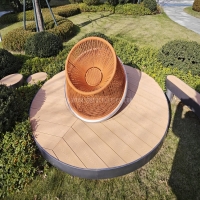Welcome to the website for landscape facilities products and knowledge.
What are the fire resistance properties of the table’s materials?
When selecting furniture for commercial spaces, offices, or even residential areas with specific safety requirements, understanding the fire resistance properties of table materials becomes crucial. Different materials exhibit varying responses to fire exposure, which can significantly impact safety outcomes during emergencies.
Wood tables, while aesthetically pleasing, possess inherent flammability. Solid hardwoods generally offer better resistance than engineered wood products like particleboard or MDF, which often contain adhesives that can accelerate burning. The treatment of wood with fire-retardant chemicals can substantially improve its performance, creating a protective char layer that slows combustion.
Metal tables, particularly those made from steel or aluminum, demonstrate superior fire resistance as these materials are non-combustible. While they don't burn, their structural integrity can be compromised at extremely high temperatures, with steel beginning to weaken around 1000°F (538°C). The thickness of the metal and any protective coatings further influence performance.
Glass tables, especially those made from tempered glass, offer interesting fire resistance characteristics. While glass doesn't burn, extreme temperature differentials can cause thermal shock and potential breakage. Certain types of fire-rated glass can withstand direct flame exposure for extended periods without compromising structural stability.
Stone and composite materials present additional options. Natural stone like granite or marble is virtually fireproof, while engineered quartz surfaces typically resist temperatures up to 150°C before potential damage. Modern composite materials are increasingly being formulated with enhanced fire-retardant properties, often meeting specific safety standards.
Various testing standards, including ASTM E84 and UL 723, measure surface burning characteristics, while other certifications address specific applications. When evaluating tables for fire safety, consider both the base material and any additional treatments or coatings that might enhance resistance. The intended environment—whether a high-risk commercial kitchen or a standard office space—should guide material selection to ensure both aesthetic appeal and appropriate fire safety measures.
Related search:

Recommendation
Swivel chair-Specialty steel structure woven rattan leisure chair with rotatable design